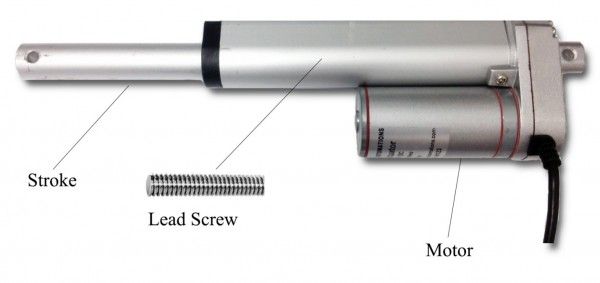If you’re into electronics, engineering and making things move, you’ll need a good handle on electric actuators. Use this beginner’s guide to electric actuators before you set out to purchase your first actuator.
What is An Actuator?
Before linear electric actuators were around, the only way to make a robot move forward was to use rotary actuators. Linear actuators changed all that. When it comes to electric actuators, you’ve got two main choices: lead screw and ball screw. You’ve really got a ton of choices, like peizo-electric, and there are a ton of innovations happening right now, but for this article, we’ll stick to the basics.
Lead Screw Actuators
Lead screw actuators use a threaded lead screw and a nut to create motion. The gear system runs, turning the screw moving it along the nut.
Here’s a quick diagram to illustrate the idea.
Ball Screw Actuators
They essentially use the same principle with a lead screw and a motor, but instead of using a nut, they use small bearings that run inside the threads. This can change the amount of friction that occurs on the nut and screw.
Either actuator you choose, there are a number of different kinds. These include track actuators, feedback actuators, mini linear actuators high speed actuators and many others. If you can think it up, there’s probably an actuator that can handle it.
The Components
Although electric actuators are simple systems, a lot goes into the making of these devices. Here’s a quick look at the internals of a linear electric actuator
For more detail: A Beginner’s Guide to Electric Actuators

